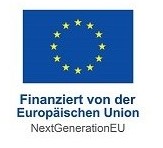The intelligent use of data is becoming a key driver of innovation and a competitive factor in many industries. The quality, structure and quantity of the data are of crucial importance for data-driven research and development. Particularly in sensitive areas such as medicine, there is a great deal of tension between data use and data protection. According to the General Data Protection Regulation (Article 9 GDPR), medical and health data is among the ‘special categories of personal data’, and high hurdles are set for its processing.
AI development and medical research in Germany
However, this data is of great value as it can help improve diagnosis, prognosis, treatment plans and therapy. Many organizations, such as hospitals and manufacturers of medical equipment, are already collecting a considerable amount of data on health. Anonymization of medical data and the measurement of this anonymization can reduce legal uncertainties and make it possible to develop AI for medical research in Germany in accordance with the requirements of the EU AI Act.
Use of two anonymization methods
In the ANONY-MED project, medical data is anonymized in two ways: through privacy-preserving data synthesis with generative models and through Homomorphic Encryption (HE). Privacy-preserving data synthesis creates synthetic data sets that do not allow conclusions to be drawn about individuals, but still contain statistically relevant patterns. Homomorphic Encryption (HE) enables data to be processed whilst encrypted so that sensitive information remains protected during analysis. The accuracy of the predictions made by the resulting AI models and that of the statistical analyses is measured. At the same time, the degree of anonymization of the data is quantified by means of privacy metrics. The development of methods and models that meet the highest ethical and legal standards is guaranteed by a framework developed specifically for the project.
The ANONY-MED approach will be applied and evaluated in three specific use cases in order to demonstrate the practicability and translatability of the approach.
The project will run from January 2023 to December 2025. The funding from the German Federal Ministry of Education and Research (BMBF) and the EU totals almost 1.4 million euros.
 Fraunhofer Institute for Applied and Integrated Security
Fraunhofer Institute for Applied and Integrated Security 

